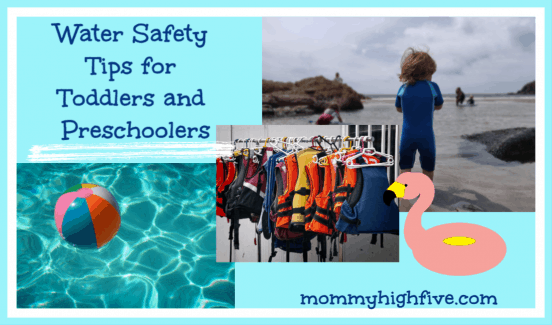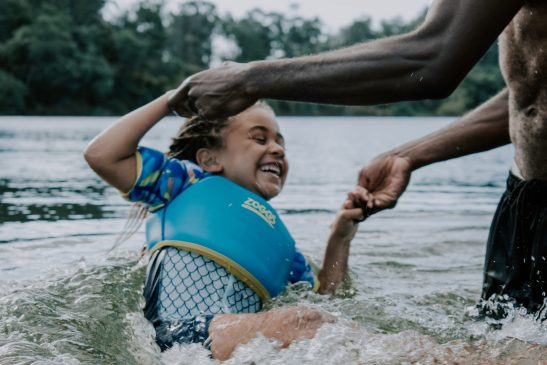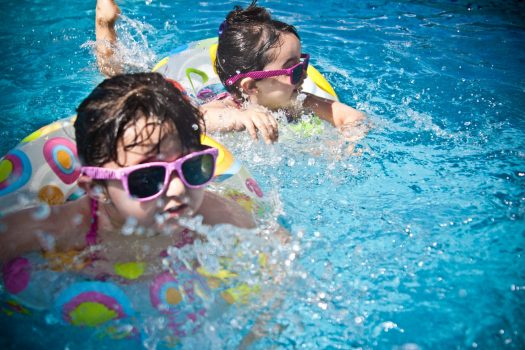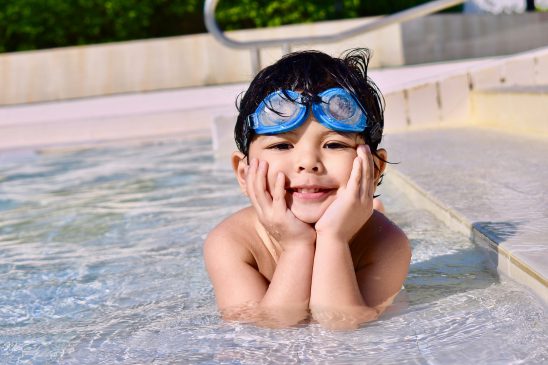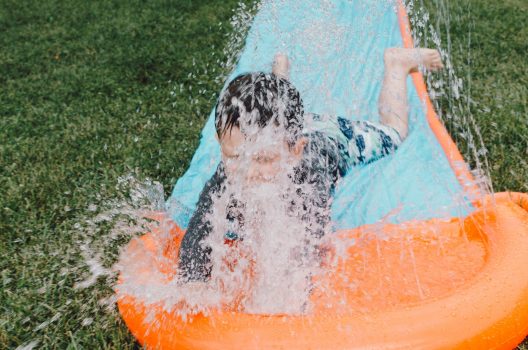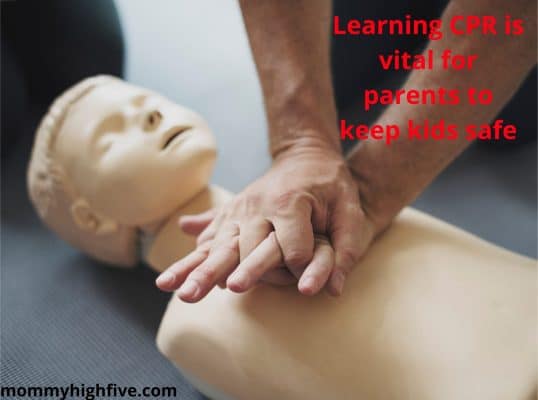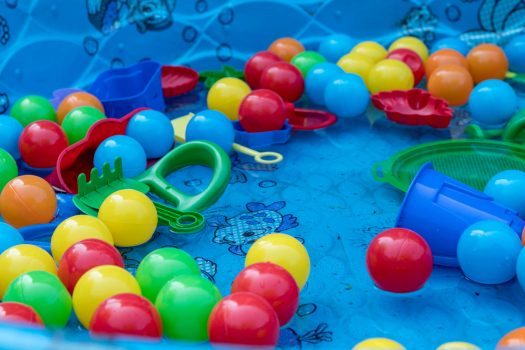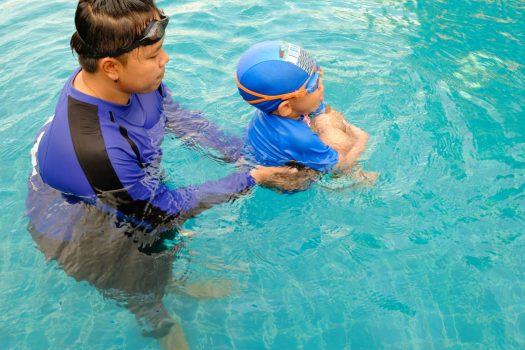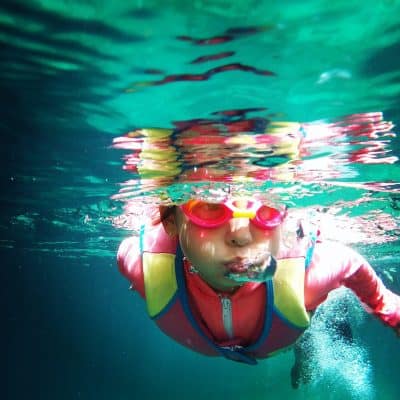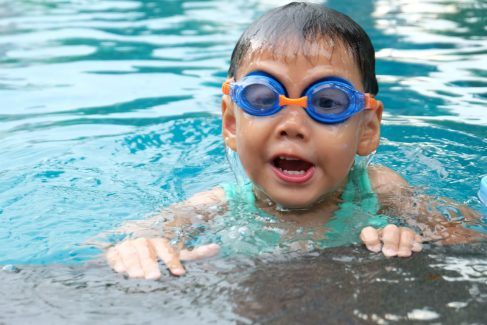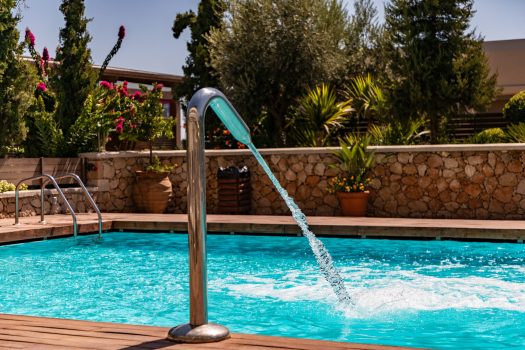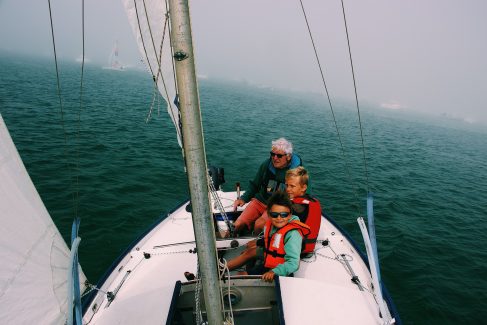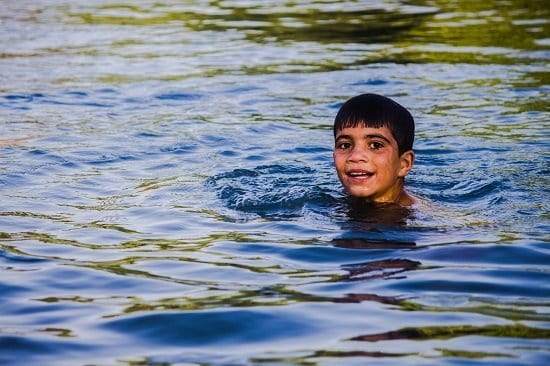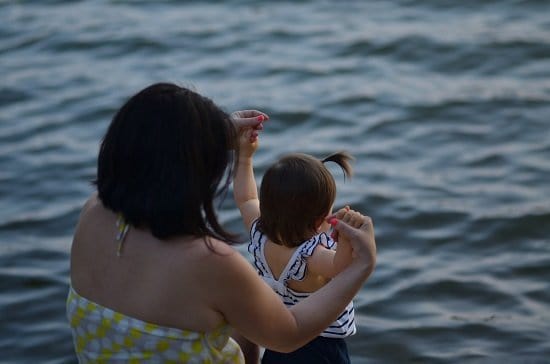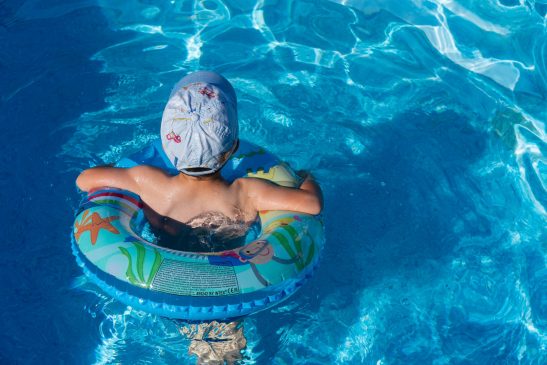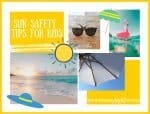According to the American Academy of Pediatrics, drowning is the number one cause of death in children ages one to four. Eighty-seven percent of drowning fatalities happen in home pools or hot tubs for children younger than 5. Most take place in pools owned by family or friends. While these stats are certainly alarming, drowning is preventable with proper safety measures in place. In this article, we will explore top water safety tips for kids!

As temperatures heat up and summer draws closer, many families will start heading to the water to have fun and cool off. Whether it is to go fish on a lake, swim in a pool, or surf in the ocean, water-based activities are the most popular in the summer!
With those activities, however, comes risk for injury, or even death. Hence it is imperative to exercise caution around water and teach your toddlers about water safety.
In order to cover as many points as possible, we will be breaking down the tips into three categories of water safety: home-based water safety, pool safety, and open water (for example, lakes and oceans) safety. Each section offers practical, life-saving insights that will increase your understanding of how to keep your precious children safe.
Any amount of water is considered a safety risk for small children. Did you know a drowning can occur in as little as an inch of water? The best way to keep children safe in any body of water is to stay diligent and always supervise them. We will go over many water safety tips in this article, but the first line of defense is you!
If your children are around water, your radar needs to be up and your concern for their safety needs to equal that of them being behind the wheel of a car. If your children are going to be around water under the supervision of someone else, make sure they take the same precautions.
While we’re on the topic of keeping your children safe outside, parents should be mindful of the sun as well water safety! Sun damage can occur with just 15 minutes of exposure, so be sure to keep that in mind when outside playing in the water.
Liberally and regularly apply sunscreen with at least a SPF 30, but also wear sunglasses, hats, and/0r water clothes. These precautions are a few of the ways you can protect your children from the sun while playing in the water.
Water Dangers to Young Kids
Extreme Water Temperature
Since young children overheat quicker than adults do, extremely high or low water temperatures can make their hearts race dangerously fast. In general, children are most comfortable swimming in water that is 82-86 degrees.
There are a few ways children can safely enjoy hot tubs. First, minimize the amount of time they spend in hot water. Don’t let them stay in more than 5-15 minutes, depending on the water temperature. Next, avoid extremely hot temperatures, around 104 degrees.
Children can tolerate 98 degree water much better. Finally, encourage them to only partially immerse themselves in warm water. Many hot tubs have steps children could sit on to do this.
Likewise, extra cold water can be problematic for young kids since body temperature drops faster in the water than on land. Exercise the same precautions with cold water and watch for shivering, cramping, or shock.
If you foresee a situation where your children will be in chilly water, perhaps at a beach or lake, make sure they wear a wet suit to stay warm and prevent shock.
Water Speed
If you plan on taking your children to a water park, take caution around fast moving attractions. For instance, wave pools pose a threat since the water speed accelerates and creates rough water. As always, never leave your child unsupervised so you can keep on eye on how fast the water is moving.
Water Depth
Be aware of the water depth before you allow your children to play. As their parents, you best understand their comfort in deep water. The last thing you want is to see them struggling to get air because they’re in over their heads.
On this topic, consider enrolling your young children in swimming lessons. Qualified swim teachers can teach your children how to float and help them develop other essential skills to stay safe in deep water. Knowing how to swim is an important part of staying safe in the water.
Unseen Currents and Sudden Drop Offs
Before taking your children to natural, outdoor bodies of water, make sure you understand the landscape as best you can. Even if children are comfortable in a swimming pool, they are still vulnerable to unseen dangers such as strong currents and sudden drop offs.
Do some research to get a good idea of the water conditions prior to swimming outdoors. At the beach, keep your eye out for signs warning of rip currents and ask the lifeguard about any other hazards. Rivers often have currents which can be especially dangerous since they are fast moving and unpredictable.
Animal Life
Playing in outdoor water, whether it’s lakes, rivers, or the ocean, is so much fun but also comes with inherent wildlife. Always be mindful of potentially dangerous animals in the area, which will vary depending on where you are.
Some bodies of water may be home to snakes, alligators, or jellyfish. Make a plan of what you’ll do if you encounter any of these animals and warn your children of so they can be on the lookout.
Home Water Safety Tips
It is important to consider water safety measures to put in place under your own roof. You may be surprised at all the potential drowning risks within your own home. Keep reading to discover actions you can take to practice water safety at home.
Learn CPR
This tip can apply to all areas of water safety. Find a local CPR certification course and take it! If you have children, knowing how to administer CPR is of utmost importance. Cardiopulmonary Resuscitation (CPR) looks different on children, depending on their age and development.
There are different methods to use for smaller lungs and airways. If your child stops breathing due to water inhalation, being CPR certified could save their life. If you have already become CPR certified, practice it often to where it becomes muscle memory.
Dump out containers of water
Toddlers are exceptionally curious and prone to getting into things. For this reason, buckets of water (or any other liquid) around the house should be emptied when not in use. Dispose of the water and turn the bucket upside down to dry and to prevent water from collecting.
Empty kiddie pools after use
On a related note, empty the water in small kiddie pools after play time is over and turn the pool upside down or store away when not in use. When children play in kiddie pools, they will naturally want to return to play some more, whether it is time to swim or not. Eliminate the risk of them sneaking off to play in the water by emptying the small kiddie pools after each use.
Keep toilet lids closed and locked
Install childproof locks on all toilet seats. This is especially important if you have children who are potty training and might take it upon themselves to try and use the toilet when you are not around.
Stay within arms reach of your child in the bathtub
Fill the bathtub with only the amount of water that is needed for your child to get clean. Eliminate distractions during bath time for yourself so that your focus can be on your child. I know this from personal experience since my 16-month-old daughter loves bath time.
I always put my phone away and make sure other household needs are taken care of so that my focus can be on my daughter the whole time. As with other containers of water mentioned earlier, make sure to empty the water after the bath.
Swimming Pool Safety Tips
One of the most sought-after activities during the summer, especially in the southeast where I live, is a day at the swimming pool! There are few things as refreshing as jumping into a pool of water on a hot, humid day. The appeal of a swimming pool is like a magnet to a child, so the following tips should always be followed on a pool day.
Teach your child to swim
This tip ranks high on the list, along with getting CPR certified. As soon as your preschooler is able, swim lessons should be a part of their extracurricular activities. The American Red Cross has developed swim lessons for children, and you can often find local instructors as well.
If you live in a neighborhood with a swim/tennis community, ask the HOA if they have referrals for swim instructors. The YMCA also offers swim lessons. Near where I live, a local college opens their swim facilities to the public for swim lessons during the summer.
Certified swim instructors will be able to teach your child to swim and how to survive if they should find themselves in a life-threatening situation in the pool.
Make sure your kids wear flotation devices
For toddlers who are early swimmers or do not know how to swim, outfit them in puddle-jumper style flotation devices. These life vests are perfect for allowing them to move about and continue to learn how to swim safely.
For infants, a swim ring with holes for their legs and a sun canopy are perfect for introducing them to the pool with an adult. Other floating toys like pool noodles and kick boards are great to keep handy as well. These can be used to continue to learn how to swim and are used in water rescue efforts as well!
Do not rely solely on a lifeguard
If you frequent a swimming pool that is staffed by a lifeguard, then that is great! However, you should not rely on a lifeguard to babysit your children while they are in the pool.
A lifeguard is stationed to help prevent and respond to water rescue emergencies. They cannot keep their eyes on just your child, so it is important to remember to supervise your children no matter if there is a lifeguard or not. Talk to your children about what the lifeguard can do and teach them to listen for the lifeguard’s whistle and commands.
Teach your children pool rules
Most public pools have posted rules that you should review with your children before swimming. If there are no posted rules, teach your children to follow some simple pool safety advice:
-
- No running. In a wet, slippery environment, running can lead to unintentional falling into the pool or on hard concrete.
- No diving. Most swimming pools are not deep enough to accommodate diving.
- Be mindful of others. Advise your children not to splash others (where possible) and be careful of swimming into people.
- No horseplay. This one is important! Children should never cling onto the backs of others or horseplay in a pool. What starts as a fun game can lead to a life-threatening situation in an instant.
- Do not crowd the pool. If the pool seems overcrowded, have your child wait until some of the people dissipate to swim. A crowded pool makes for a very unsafe environment for swimming.
Be familiar with the pool
Make sure your child knows where to find the entrance and exit ladders of the pool. Note where the depth markers are and how to read them. With my own children, I have them identify where the deep end of the pool begins so they can create a visual marker for that spot. They are not allowed to go into any depth that exceeds their height.
Install fences around swimming pools
If you have a swimming pool at home, install a fence around the perimeter of the pool. The fence should be at least four feet high with gates that self-close and self-latch. Be mindful of when children learn to unlatch the gate themselves as well!
Open Water Safety Tips
Swimming in open water offers a completely different environment, and completely new dangers, when it comes to staying safe. Whether your child will be swimming in a lake, pond, or the ocean, always follow these water safety tips for open water.
Always wear a life jacket on boats
Before going on a boat, always outfit your child with a proper fitting life jacket and keep it on them for the duration of the boat ride. If you are renting a boat, most companies provide a life jacket. However, you need to fit your child to the life jacket before boarding. Life jackets should be worn the entire time your child is on the boat, during water activities such as tubing or water skiing, fishing, and when swimming.
Learn to tread water
In addition to learning how to swim, your child should know how to tread water. The ocean has strong currents and rip tides that can pull your child out to sea. Any efforts to out swim a rip tide will lead to exhaustion and treading water will help keep their heads above water until help can arrive.
Be mindful of currents and rip tides
Public swimming areas at the ocean usually note if a rip tide or strong current is present. However, it is very possible that a rip tide or strong current can occur without anyone knowing first. Advise your children of how to react if they are caught in the current and to swim with it, not against it.
Have a responsible adult with your child
If your child is going to be swimming in open water, have them swim with a responsible adult. If your child experiences distress while swimming or gets caught in a current, they need someone within talking distance to alert.
Respect the open water
Teach your child the difference between swimming in a pool verses swimming in open water. Riverbeds, ocean floors, and lake beds can contain all manner of wildlife, sticks, rocks, shells, and uneven surfaces. If they are not familiar with swimming in this environment, it can lead to injury.
Watch out for waves
The power of a strong wave cannot be underestimated. If your child is playing in the surf at the ocean, or even on a shore at a lake, make sure you are being vigilant about waves. My family often takes our boat to a local lake that is known to have waves that rival the ocean.
Just because water appears relatively calm, a large wave can occur at any moment. Large boats passing by can cause heavy wakes and changing weather out at sea can affect the strength of waves at the shore.
Keep track of the weather
Especially at the beach, the weather can change in an instant creating an unsafe environment for being on the open water. Turn weather alerts on using your phone. Some phone apps allow notifications for when lightening strikes within a certain distance or rain is expected in a short time frame. If severe weather encroaches, seek immediate shelter out of the water.
Water safety is extremely important when you have children. Having formerly worked in law enforcement, I can guarantee these tips would have prevented many of the drowning calls we had. Complacency is not an option when your children are around water. Always remain vigilant and teach others these safety tips as well!
Most kids are drawn to the water and love any activity involving getting soaked. Some of the best memories are made in the water. Make sure the memories are positive ones by following these water safety tips!
FAQs
How old should a child be to swim without an adult?
Children learn to swim at varying ages, but a parent should still supervise them until they are responsible enough to be left alone. Note that many facilities have policies forbidding children to swim without an adult in the water. However, it is always a safe practice to swim with a lifeguard nearby. Swimming alone is dangerous for any age, and everyone is encouraged to have a buddy around in case of drowning.
What are some of the biggest water dangers to children?
Several water conditions present dangers to children. For instance, extreme water temperatures are harmful to children since they can’t regulate their body temperatures very well yet. Fast moving water and deep water also pose obvious risks to young kids. When swimming in natural bodies of water, kids need to exercise caution around other hazards such as currents, drop offs, and animal life.
How can parents protect their children from water danger?
In this article, we’ve outlined many water safety tips which will help parents keep their children safe. When in open water, parents can protect their kids by being cognizant of the weather and encouraging them to wear a life jacket as well as learn to tread water. Additionally, it is important to learn CPR and always supervise children playing in the water. Parents are encouraged to talk to their children about water safety rules as well.
